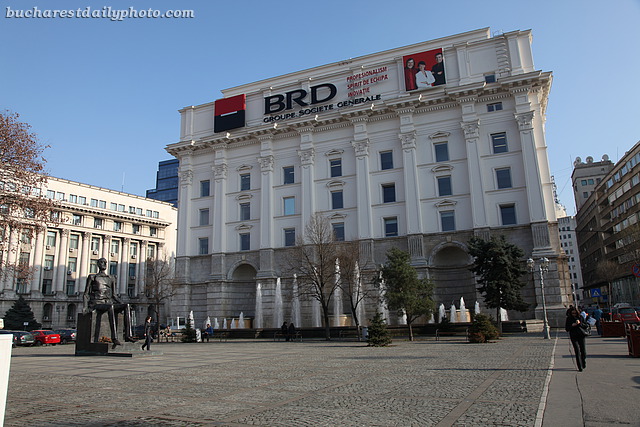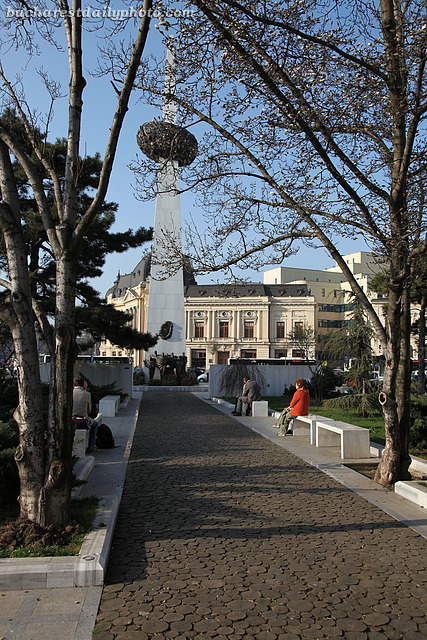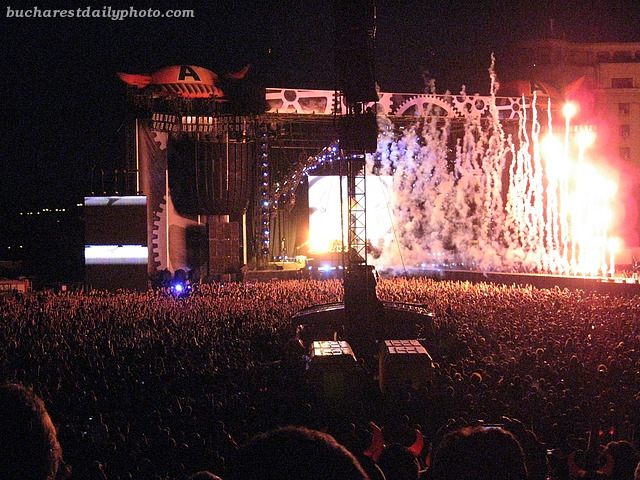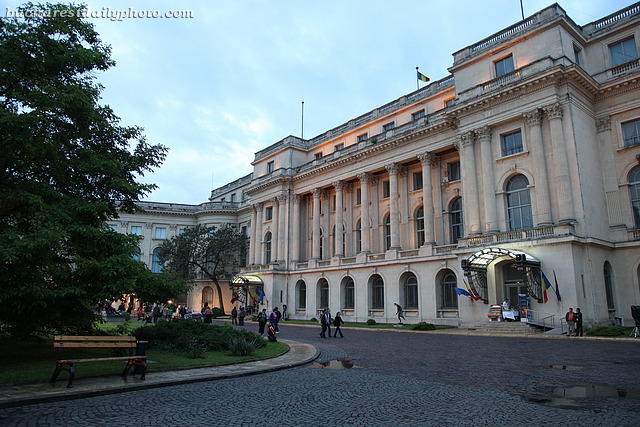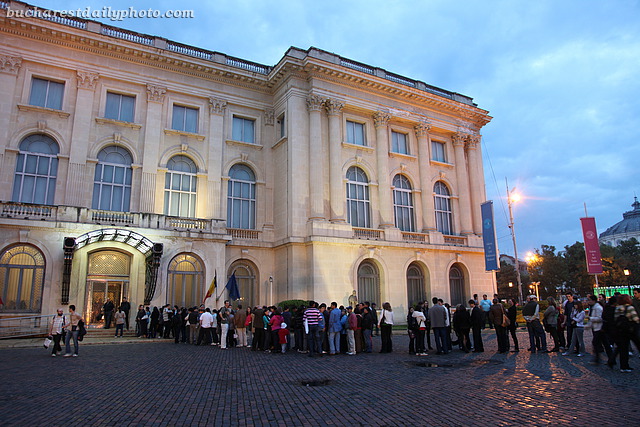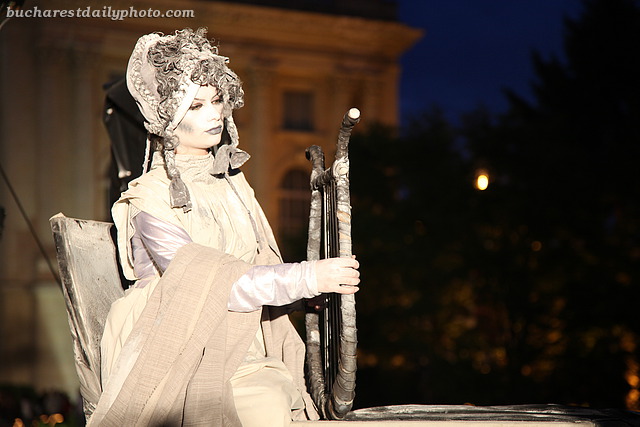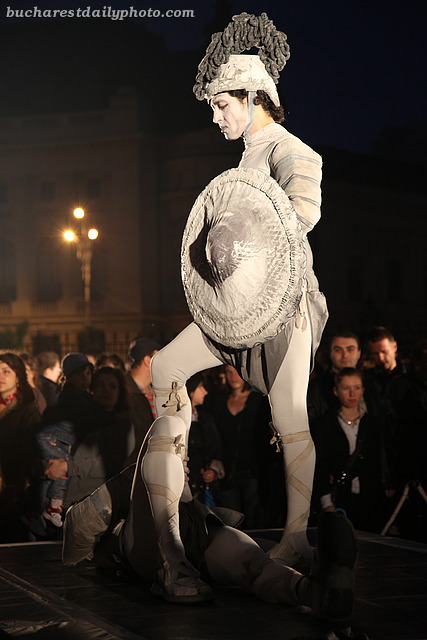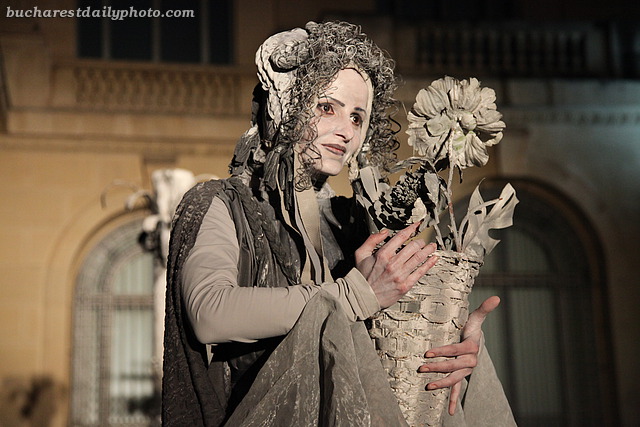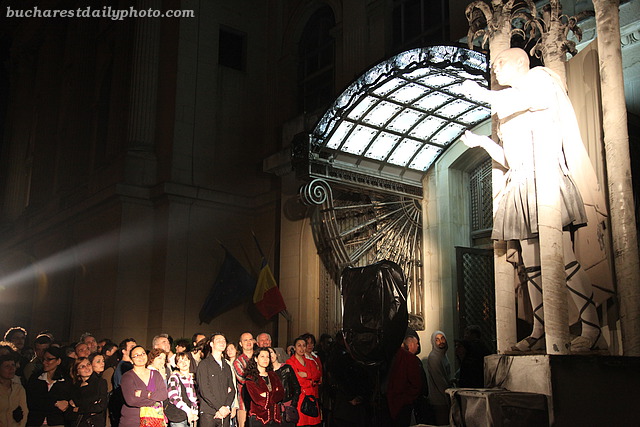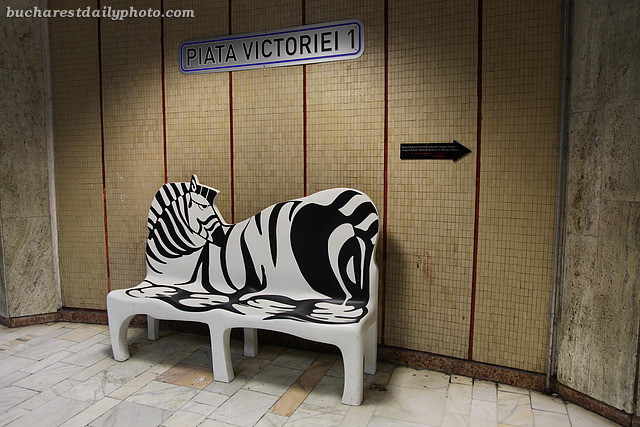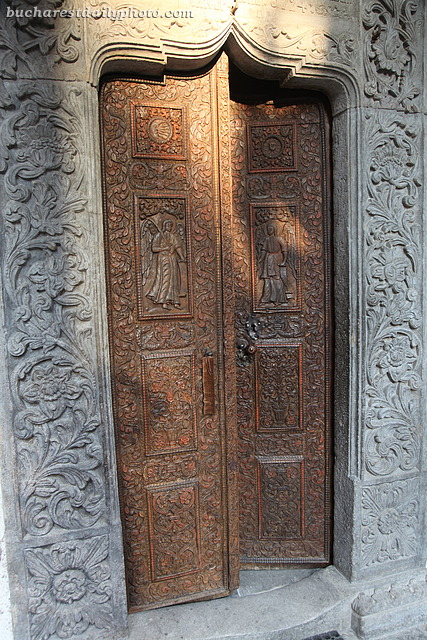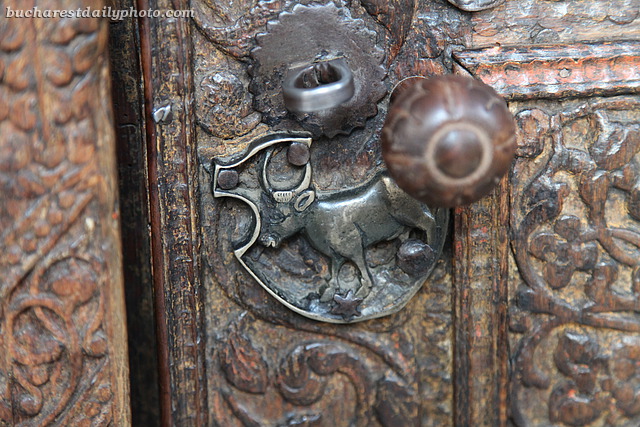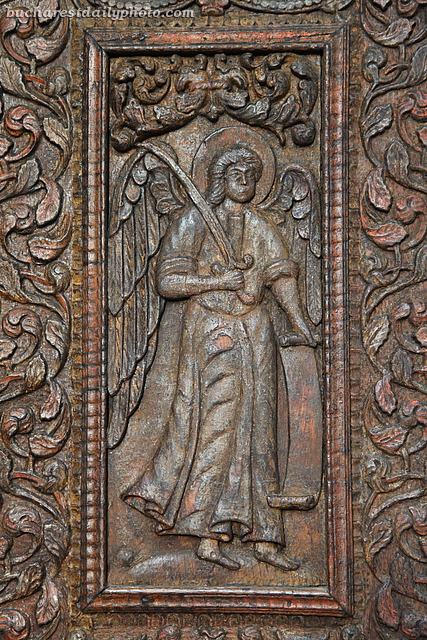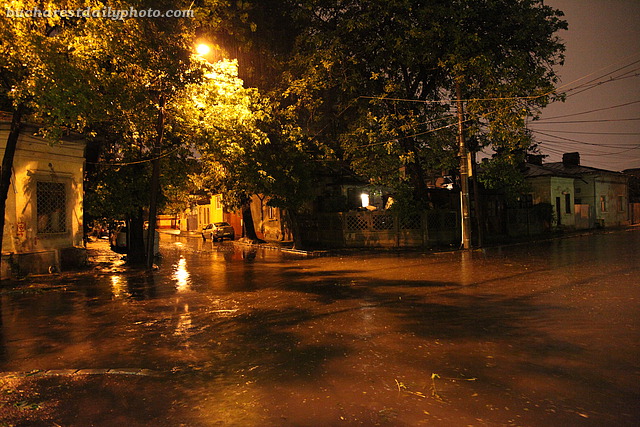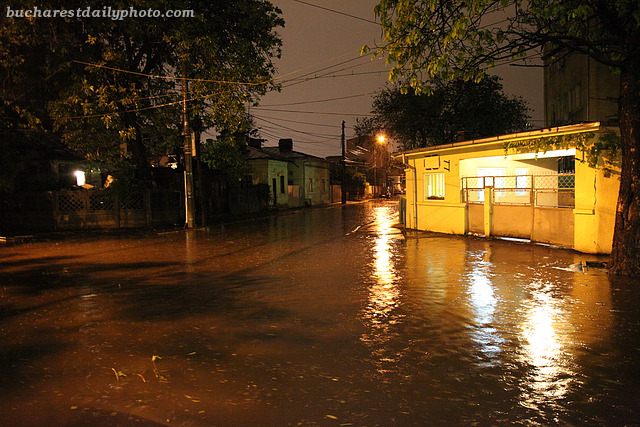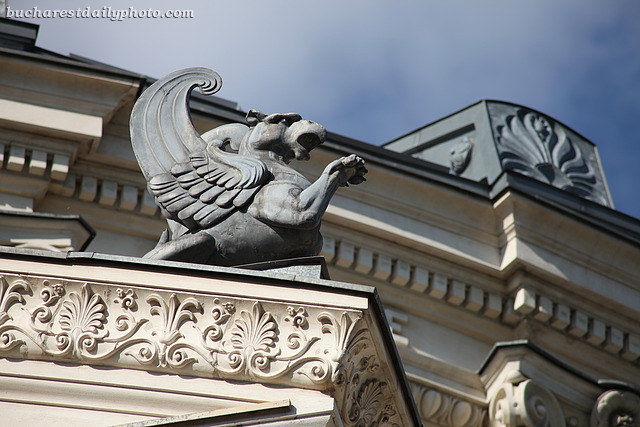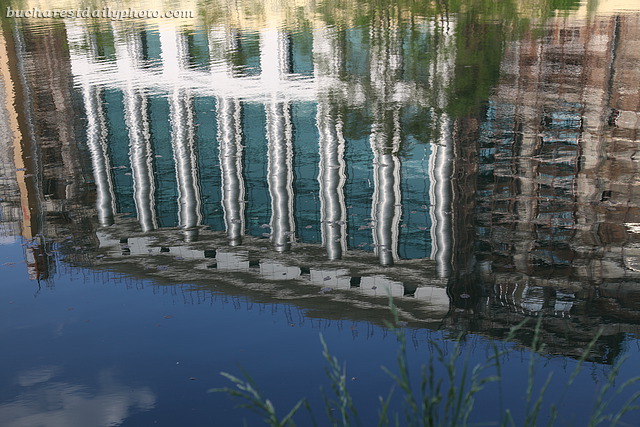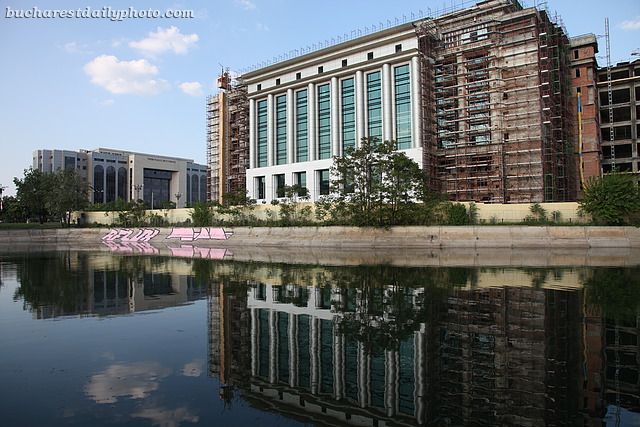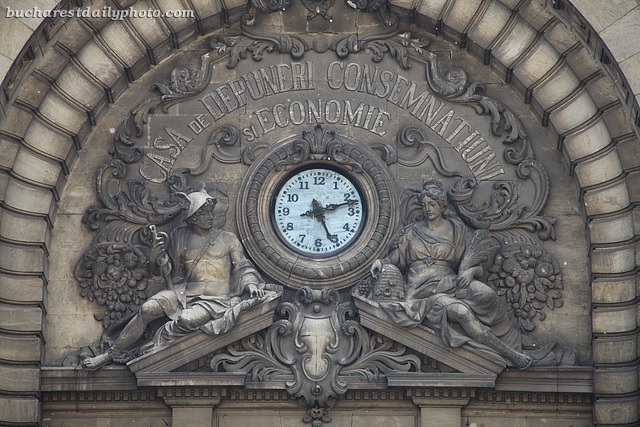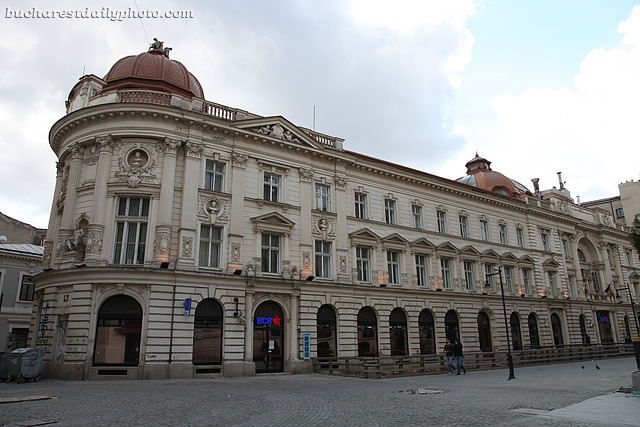The Revolution Square (Piaţa Revoluţiei in Romanian) is a square in downtown Bucharest, located on Victory Road (Calea Victoriei in Romanian). In previous posts I’ve showed some of the buildings surrounding the square and the square’s artwork but I though I’ll write a few words about the square itself. Before 1989 it was known as the Palace Square (Piaţa Palatului in Romanian) because of the former Royal Palace which is located in the square. The name changed after 1989 to commemorate the Romanian Revolution because it was here, in the Revolution Square, that the collapse of Ceauşescu’s regime started. This is the place where Ceauşescu had his last speech on December 21 1989, from a balcony of the former Central Committee of the Romanian Communist Party, in front of 100.000 people, a mass meeting that turned into a protest demonstration and led to the popular revolt that followed. Ceauşescu and his wife fled the building by helicopter, never to return. The former Royal Palace (now the National Museum of Art), the Athenaeum, the University of Bucharest Library, Kretzulescu Church, Iuliu Maniu statue, the Rebirth Memorial are all located on the square. Prior to 1948 the square also hosted an equestrian statue of Carol I of Romania. It was created in 1939 by the sculptor Ivan Meštrović and destroyed by the communists when they took power. In 2005 the City Hall decided to recreate the statue and sculptor Florin Codre was assigned for the work but I didn’t hear any update on the project lately.
Good music, good sound, good show. Who said metal is dead? 🙂
For those unfamiliar with it, The Night of Museums is a cultural event organized together by multiple museums when all the participant institutions remain open late into the night and admittance is free. The idea behind the project is to introduce new people to cultural institutions. Articles I found on the web noted that on this year’s edition over 3000 museums in 39 countries remained open late Saturday night, May 15th. 12 museums took part in this year’s edition (the 6th) in Bucharest. As you can see from the photos, there were lines at the entrance, something that you never see otherwise. On the contrary, if you visit on a normal day you practically have the place to yourself. Most of the museums also had performance events, like plays, movies or music concerts. Today’s photos are from the National Art Museum, which presented a pantomime show called “The Statues” performed by Masca theatre company.
Have you ever sat on a zebra? If the answer is no then now’s your chance 🙂 These cute zebra benches are awaiting sitters in the Victory Square subway station. The project is called Zebrula and is part of a group of ten installations that will decorate the station. The artist for Zebrula is Mara Patriche.
No matter how many times I look at the Athenaeum building, I still discover something new every time I pass by.
Ceauşescu’s regime left Bucharest with many dark legacies incluging his Civic Center project which I mentioned before on this blog. Many buildings intended to be part of this new image of Bucharest were unfinished when the communists were forced to give up power at the end of 1989. Some of the buildings were completed later, but the one in today’s reflection did not share their fate. This massive edifice which is supposed to be the new house of the National Library collection is still half way to being ready. Work on the building stopped in 1986, even though the building was supposed to be ready in 1989. Finally, more than 20 years later, work was restarted last year and these day we can see it progressing slowly.
Above the entrance to the C.E.C. Palace (National Savings Bank)
Today’s photograph shows a bank building on Lipscani, facing the National Bank of Romania. The books on the architecture of Bucharest that I consulted list it as being built in 1910 – 1913, but sources I found on the web say the building was most probably built before 1900. The architect is unknown. The building served as the headquarters of the General Romanian Bank, which was a branch of Gesselschaft and Bleichröder Bank (thanks to Bucharestian for this information). It was restored during the communist regime in 1983-1984 and for a while served as a shopping mall. I remember buying shoes there once. Today it’s being used as a bank again.
